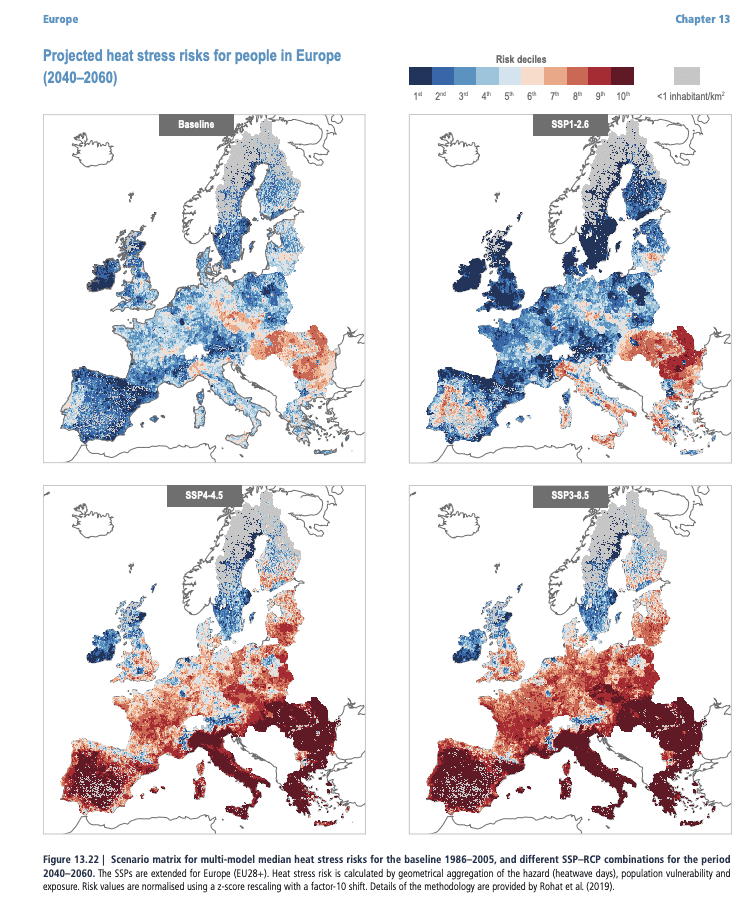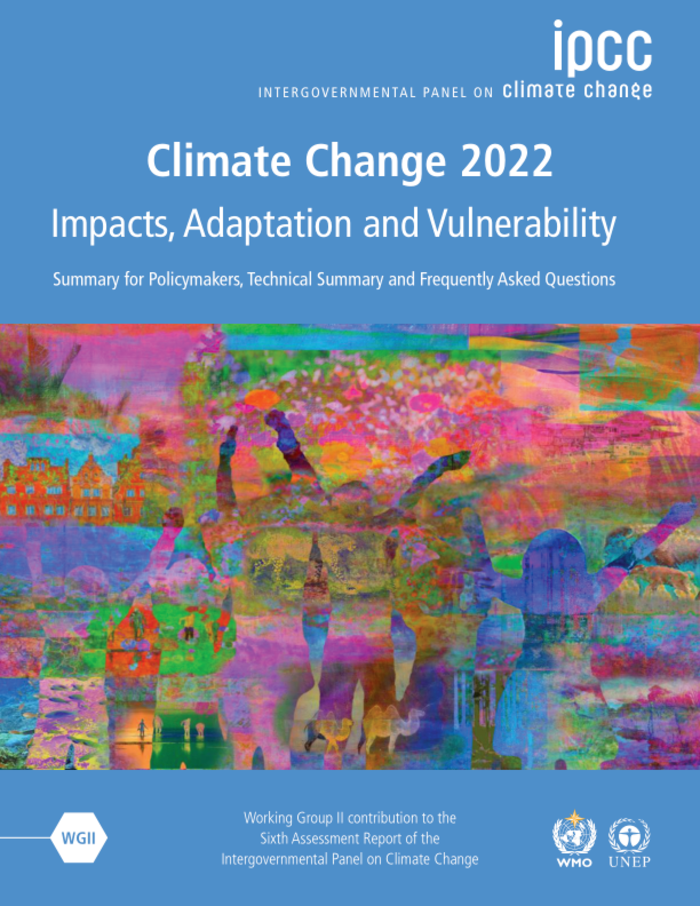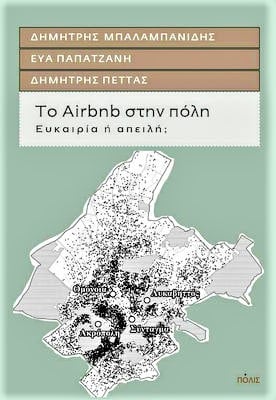
Το Ελληνικό Δίκτυο ΦΙΛΟΙ ΤΗΣ ΦΥΣΗΣ, συνέχεια της προηγούμενης δημοσίευσης με θέμα “Κλιματική κρίση και Τουρισμός” [ΕΔΩ] παρουσιάζει την έκδοση του IPCC με θέμα:
Climate Change 2022: Impacts, Adaptation and Vulnerability
Frequently Asked Questions
From the report accepted by Working Group II of the IPCC but not approved in detail
Part of the Working Group II Contribution to the Sixth Assessment Report of the Intergovernmental Panel on Climate Change
Δυστυχώς η έκδοση είναι στα αγγλικά – στη συνέχεια παρουσιάζουμε τον πρόλογο της έκδοσης και τα περιεχόμενα.
[Πληροφορίες – Ανάγνωση – Δωρεάν Λήψη ΕΔΩ]
Πρόλογος
Η κλιματική αλλαγή επηρεάζει όλα τα μέρη του κόσμου μας, αλλά γνωρίζουμε ;ότι οι επιπτώσεις, οι κίνδυνοι, οι ενέργειες προσαρμογής και η ευπάθεια διαφέρουν από την περιοχή στην περιοχή. Αυτή η πολυπλοκότητα αυξάνεται περαιτέρω από διάφορες άλλες μη κλιματικές τάσεις, όπως η επέκταση της μη βιώσιμης χρήσης γης, η βιοποικιλότητα, η απώλεια ή ταχεία αστικοποίηση που πρέπει να λάβουμε υπόψη μας εάν θέλουμε να μειώσουμε τους κλιματικούς κινδύνους και να περιορίσουμε την υπερθέρμανση του πλανήτη.
Εν συντομία: Ένα κείμενο σχετικά με την επιστήμη του κλίματος συχνά δεν είναι εύκολα κατανοητό – γνωρίζουμε πολύ καλά ότι ορισμένα ή όλα τα κεφάλαια της έκθεσής μας τείνουν να γράφονται σε γλώσσα ειδικών, η οποία συχνά είναι δύσκολο να διαβαστεί και να κατανοηθεί από μη ειδικούς.
Για να κάνουμε την έκθεσή μας πιο προσιτή, οι συντάκτες μας έχουν κάνει μια προσπάθεια να διατυπώσουν και να απαντήσουν σε ένα σύνολο βασικών ερωτήσεων με τρόπο που ο καθένας ο ενδιαφερόμενος μπορεί να καταλάβει.
Αυτές οι απαντήσεις των ειδικών συνοψίζουν και εξηγούν μερικά από τα βασικά ευρήματα της έκθεσής μας. Όποτε είναι επιστημονικοί όροι που απαιτούνται για την περιγραφή των τάσεων και των φαινομένων, επεξηγούνται αυτοί οι όροι
σε σαφή, μη εξειδικευμένη γλώσσα.
Οι Συχνές Ερωτήσεις μας (FAQ) γράφονται με σαφή πρόθεση να μοιραστούμε τα βασικά ευρήματα της έκθεσής μας με όσους περισσότερους πολίτες είναι δυνατόν, επειδή η οικοδόμηση της παιδείας για το κλίμα είναι το κλειδί εξασφαλίζοντας ένα βιώσιμο μέλλον.
Ωστόσο, οι Συχνές Ερωτήσεις επικεντρώνονται μόνο σε σχετικές πτυχές και μπορεί να χρησιμεύσουν ως εισαγωγικά στοιχεία σε βασικά θέματα. Δεν καλύπτουν όλες τις πτυχές που ίσως χρειαστεί να εξετάσουν οι λήπτες αποφάσεων. Ως εκ τούτου, εμείς ιδιαίτερα προτείνουμε να διαβάσετε και το σχετικό κείμενο των κεφαλαίων.
[Ελεύθερη μετάφραση μέσω transalator]
Chapter 1: Point of Departure and Key Concepts
FAQ 1.1 | What are the goals of climate change adaptation?
FAQ 1.2 | Is climate change adaptation urgent?
FAQ 1.3 | What constitutes successful adaptation to climate change?
FAQ 1.4 | What is transformational adaptation?
FAQ 1.5 | What is new in this 6th IPCC report on impacts, adaptation and vulnerability?
Chapter 2: Terrestrial and Freshwater Ecosystems and Their Services
FAQ 2.1 | Will species become extinct with climate change and is there anything we can do to prevent this?
FAQ 2.2 | How does climate change increase the risk of diseases?
FAQ 2.3 | Is climate change increasing wildfire?
FAQ 2.4 | How does nature benefit human health and well-being and how does climate change affect this?
FAQ 2.5 | How can we reduce the risks of climate change to people by protecting and managing nature better?
FAQ 2.6 | Can tree planting tackle climate change?
Chapter 3: Oceans and Coastal Ecosystems and Their Services
FAQ 3.1 | How do we know which changes to marine ecosystems are specifically caused by climate change?
FAQ 3.2 | How are marine heatwaves affecting marine life and human communities?
FAQ 3.3 | Are we approaching so-called tipping points in the ocean and what can we do about it?
FAQ 3.4 | Which industries and jobs are most vulnerable to
the impacts of climate change in the oceans?
FAQ 3.5 | How can nature-based solutions, including Marine protected areas, help us to adapt to climatedriven changes in the oceans? Chapter 4: Water
FAQ 4.1 | What is water security, and how will climate change affect it?
FAQ 4.2 | Which places are becoming wetter and which are becoming drier, and what risks do these bring to people?
FAQ 4.3 | How will climate change impact the severity of water-related disasters, such as droughts and floods?
FAQ 4.4 | Globally, agriculture is the largest user of water. How will climate change impact this sector, and how can farmers adapt to these changes?
FAQ 4.5 | Which principles can communities implement to sustainably adapt to the ways that climate change is impacting their water security?
Chapter 5: Food, Fibre and Other Ecosystem Products
FAQ 5.1 | How is climate change (already) affecting people’s ability to have enough nutritious food?
FAQ 5.2 | How will climate change impact food availability by mid and late century and who will suffer most?
FAQ 5.3 | Land is going to be an important resource for mitigating climate change: how is the increasing competition for land threatening global food security and who will be affected the most?
FAQ 5.4 | What are effective adaptation strategies for improving food security in a warming world?
FAQ 5.5 | Climate change is not the only factor threatening global food security: other than climate action, what other actions are needed to end hunger and ensure access by all people to nutritious and sufficient food all year round?
Chapter 6: Cities, Settlements and Key Infrastructure
FAQ 6.1 | Why and how are cities, settlements and different types of infrastructure especially vulnerable to the impacts of climate change?
FAQ 6.2 | What are the key climate risks faced by cities, settlements and vulnerable populations today, and how will these risks change in a mid-century (2050) 2°C warmer world?
FAQ 6.3 | What adaptation actions in human settlements can contribute to reducing climate risks and building resilience across building, neighbourhood, city and global scales?
FAQ 6.4 | How can actions that reduce climate risks in cities and settlements also help to reduce urban poverty, enhance economic performance and contribute to climate mitigation?
FAQ 6.5 | What policy tools, governance strategies and financing arrangements can enable more inclusive and effective climate adaptation in cities and settlements?
Chapter 7: Health, Wellbeing and the Changing Structure of Communities
FAQ 7.1 | How will climate change affect physical and mental health and well-being?
FAQ 7.2 | Will climate change lead to wide-scale forced migration and involuntary displacement?
FAQ 7.3 | Will climate change increase the potential for violent conflict?
FAQ 7.4 | What solutions can effectively reduce climate change risks to health, well-being, forced migration and conflict?
FAQ 7.5 | What are some specific examples of actions taken in other sectors that reduce climate change risks in the health sector?
Chapter 8: Poverty, Livelihoods and Sustainable Development
FAQ 8.1 | Why are people who are poor and disadvantaged especially vulnerable to climate change and why do climate change impacts worsen inequality?
FAQ 8.2 | Which world regions are highly vulnerable and how many people live there?
FAQ 8.3 | How does and will climate change interact with other global trends (e.g., urbanisation, economic globalisation) and shocks (e.g., COVID-19) to influence livelihoods of the poor?
FAQ 8.4 | What can be done to help reduce the risks from climate change, especially for the poor?
FAQ 8.5 | How do present adaptation and future responses to climate change affect poverty and inequality?
Chapter 9: Africa
FAQ 9.1 | Which climate hazards impact African livelihoods, economies, health and well-being the most?
FAQ 9.2 | What are the limits and benefits of climate change adaptation in Africa?
FAQ 9.3 | How can African countries secure enough food in changing climate conditions for their growing populations?
FAQ 9.4 | How can African local knowledge serve climate adaptation planning more effectively?
Chapter 10: Asia
FAQ 10.1 | What are the current and projected key risks related to climate change in each sub-region of Asia?
FAQ 10.2 | What are the current and emerging adaptation options across Asia?
FAQ 10.3 | How are Indigenous knowledge and local knowledge being incorporated in the design and implementation of adaptation projects and policies in Asia?
FAQ 10.4 | How can Asia meet multiple goals of climatechange adaptation and sustainable development within the coming decades?
Chapter 11: Australasia
FAQ 11.1 | How is climate change affecting Australia and New Zealand?
FAQ 11.2 | What systems in Australia and New Zealand are most at risk from ongoing climate change?
FAQ 11.3 | How can Indigenous Peoples’ knowledge and practice help us understand contemporary climate impacts and inform adaptation in Australia and New Zealand?
FAQ 11.4 | How can Australia and New Zealand adapt to climate change?
Chapter 12: Central and South America
FAQ 12.1 | How are inequality and poverty limiting options to adapt to climate change in Central and South America?
FAQ 12.2 | How have urban areas in Central and South America adapted to climate change so far, which further actions should be considered within the next decades and what are the limits of adaptation and sustainability?
FAQ 12.3 | How do climatic events and conditions affect migration and displacement in Central and South America, will this change due to climate change, and how can communities adapt?
FAQ 12.4 | How is climate change impacting and how is it expected to impact food production in Central and South America in the next 30 years, and what effective adaptation strategies are and can be adopted in the region?
FAQ 12.5 | How can Indigenous knowledge and practices contribute to adaptation initiatives in Central and South America?
Chapter 13: Europe

FAQ 13.1 | How can climate change affect social inequality in Europe?
FAQ 13.2 | What are the limits of adaptation for ecosystems in Europe?
FAQ 13.3 | How can people adapt at individual and community level to heatwaves in Europe?
FAQ 13.4 | What opportunities does climate change generate for human and natural systems in Europe?
Chapter 14: North America
FAQ 14.1 | How has climate change contributed to recent extreme events in North America and their impacts?
FAQ 14.2 | What can we learn from the North American past about adapting to climate change?
FAQ 14.3 | What impacts do changes in the North American Arctic have within and outside the region?
FAQ 14.4 | What are some effective strategies for adapting to climate change that have been implemented across North America, and are there limits to our ability to adapt successfully to future change?
Chapter 15: Small Islands
FAQ 15.1 | How is climate change affecting nature and human life on small islands, and will further climate change result in some small islands becoming uninhabitable for humans in the near future?
FAQ 15.2 | How have some small island communities already adapted to climate change?
FAQ 15.3 | How will climate-related changes affect the contributions of agriculture and fisheries to food security in small islands?
Cross-Chapter Paper 1: Biodiversity Hotspots
FAQ CCP1.1 | Why are biodiversity hotspots important?
FAQ CCP1.2 | How can society ensure conservation of biodiversity in climate policies?
Cross-Chapter Paper 2: Cities and Settlements by the Sea
FAQ CCP2.1 | Why are coastal cities and settlements by the sea especially at risk in a changing climate,
and which cities are most at risk?
FAQ CCP2.2 | What actions can be taken by coastal cities and settlements to reduce climate change risk?
FAQ CCP2.3 | Considering the wide-ranging and interconnected climate and development challenges coastal cities and settlements face, how can more climate resilient development pathways be enabled?
Cross-Chapter Paper 3: Deserts, Semiarid Areas and Desertification
FAQ CCP3.1 | How has climate change already affected drylands and why are they so vulnerable?
FAQ CCP3.2 | How will climate change impact the world’s drylands and their people?
FAQ CCP3.3 | What can be done to support sustainable development in desert and semiarid areas,
given projected climate changes?
Cross-Chapter Paper 4: Mediterranean Region
FAQ CCP4.1 | Is the Mediterranean Basin a ‘climate change hotspot’?
FAQ CCP4.2 | Can Mediterranean countries adapt to sea level rise?
FAQ CCP4.3 | What is the link between climate change and human migration in the Mediterranean Basin?
Cross-Chapter Paper 5: Mountains
FAQ CCP5.1 | How is freshwater from mountain regions affected by climate change, and what are the consequences for people and
ecosystems?
FAQ CCP5.2 | Do people in mountain regions, and further downstream, face more severe risks to waterrelated disasters due to climate change, and how are they coping?
FAQ CCP5.3 | Does climate change pose a risk to mountain species and ecosystems, and will this affect people?
FAQ CCP5.4 | What types of adaptation options are feasible to address the impacts of climate change in mountain regions under different levels of warming, and what are their limits?
FAQ CCP5.5 | Why are regional cooperation and transboundary governance needed for sustainable mountain development?
Cross-Chapter Paper 6: Polar Regions
FAQ CCP6.1 | How do changes in ecosystems and human systems in the polar regions impact everyone around the globe? How will changes in polar fisheries impact food security and nutrition around the world?
FAQ CCP6.2 | Is sea ice reduction in the polar regions driving an increase in shipping traffic?
FAQ CCP6.3 | How have arctic communities adapted to environmental change in the past and will these experiences help them respond now and in the future?
FAQ CCP6.4 | When will climate change impacts in polar regions surpass our ability to adapt?
Cross-Chapter Paper 7 : Tropical Forests
FAQ CCP7.1 | How is climate change affecting tropical forests and what can we do to protect and increase their resilience?
Chapter 16: Key Risks across Sectors and Regions
FAQ 16.1 | What are key risks in relation to climate change?
FAQ 16.2 | How does adaptation help to manage key risks and what are its limits?
FAQ 16.3 | How do climate scientists differentiate between impacts of climate change and changes in natural or human systems that occur for other reasons?
FAQ 16.4 | What adaptation-related responses to climate change have already been observed, and do they help reduce climate risk?
FAQ 16.5 | How does climate risk vary with temperature?
FAQ 16.6 | What is the role of extreme weather events in the risks we face from climate change?
Chapter 17: Decision-Making Options for Managing Risk
FAQ 17.1 | Which guidelines, instruments and resources are available for decision makers to recognise climate risks and decide on the best course of action?
FAQ 17.2 | What financing options are available to support adaptation and climate resilience?
FAQ 17.3 | Why is adaptation planning along a spectrum from incremental to transformational adaptation important in a warming world?
FAQ 17.4 | Given the existing state of adaptation, and the remaining risks that are not being managed, who bears the burden of these residual risks around the world?
FAQ 17.5 | How do we know whether adaptation is successful?
Chapter 18: Climate-Resilient Development Pathways
FAQ 18.1 | What is a climate resilient development pathway?
FAQ 18.2 | What is climate resilient development and how can climate change adaptation (measures) contribute to achieving this?
FAQ 18.3 | How can different actors across society and levels of government be empowered to pursue climate resilient development?
FAQ 18.4 | What role do transitions and transformations in energy, urban and infrastructure, industrial, land and ocean ecosystems, and in society, play in climate resilient development?
FAQ 18.5 | What are success criteria in climate resilient development and how can actors satisfy those criteria?
Το άρθρο IPCC “Φιλικές ερωτήσεις & απαντήσεις για την κλιματική αλλαγή” εμφανίστηκε πρώτα στο Nature Friends.










